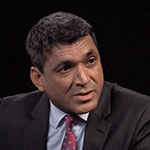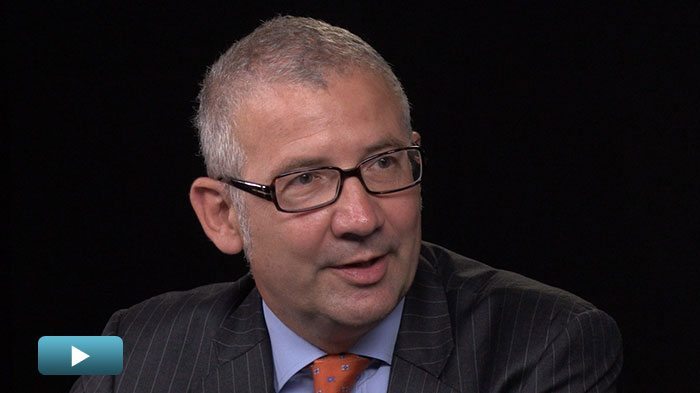PGIM Leveraging Platform for Asian Expansion
Regulatory pressures in Asia have catalyzed price corrections in the real estate market, creating more sensible multiples and opening up opportunity for investors looking to deploy capital, says PGIM managing director Benett Theseira.
Transcript Download Transcript
PREI Leveraging Platform for Asian Expansion
With Benett Theseira of PREI
Mike Straka, Privcap: Welcome to Privcap. I’m Mike Straka, joined now by Benett Theseira, head of Asia for Prudential Real Estate Investors. Welcome.
Benett Theseira, Prudential Real Estate Investors: Hi, Mike. Thank you
Straka: Explain to me the platform that you guys have out there in Asia.
Theseira: We’re one of the largest real estate investment managers in Asia. We’ve been there for more than 20 years, starting in 1994, initially with an office in Singapore and then expanding across the region. We’re now also based in Tokyo, Seoul, Hong Kong and Sydney.
Straka: The region is vast, as you know. You’ve been there since ’94. What sort of opportunities do you see right now, specifically in China?
Theseira: We see lots of opportunities in Asia, mainly because Asia is at various points of the market in terms of the cities where they are. China is interesting because we’ve seen a lot of regulatory pressure in the markets that have cooled it down. We see certainly a lot of supply issues in various cities, also in the second– and third–tier cities. All these have caused a lot of headwinds in the market.
Over time, we do see a lot of potential in the longer term, because of the growth of the markets. We feel the large organization, large population and a huge growth of domestic businesses and companies in the longer term will create lots of opportunity. So, we feel that the combination of headwinds and longer-term growth over the next six to 12 months will create some good buying opportunities in China.
Straka: What does Australia look like these days?
Theseira: Australia continues to be very interesting for us. Across Asia, we saw a very strong recovery post–global financial crisis, largely led by Southeast Asia and China. Australia and Japan were the laggards in that recovery, and hence, the opportunities in Australia are still in the growth phase. We see strong potential for good quality assets in Australia with good lease covenants, continuing to see rental growth and attractive yields relatively to assets globally. So, Australia offers good quality assets with good yields and attractive spreads against that.
Straka: We’re talking about the fundamentals of core. Do you see that different regions in Asia have better credit applicants and better renters, so to speak?
Theseira: I would say probably Australia has the best lease covenants, more familiar to what you would find in London or the U.S.—major cities where you’ve got long-term tenants and long-term leases quite different than the rest of Asia.
Straka: We talk about food groups in real estate: retail and multifamily and residential, workforce family housing, things like that. What are some of the best food groups in Asia right now where we’re core properties?
Theseira: For us, we actually find retail as being one of the most attractive sectors. Particularly retail targeted at local consumers, [such as] suburban malls in very strong neighborhoods with good attachment. The reason for this is really driven by consumption. We find very strong growth in consumption across Asia because of population growth, the very attractive demographics in terms of the younger population, growing household formation and growing affluence. And this leads to a lot of demand for product, whether it’s residential, but certainly, a lot in terms of shopping, right? So, with the suburban malls, you find these assets very resilient because it is really based a lot on necessity shopping and targeted local consumer, so it’s able to ride through different economic cycles because of the nature of the consumer and the product it caters to.
Straka: Why is real estate, in general, a good portion of one’s portfolio?
Theseira: First, it’s pretty much something everyone needs, right? You need a shopping center. You need a home. You need an office to go to, right? It’s real. It’s there. It’s tangible. And in general, what we’ve found is real estate does provide a good risk-adjusted return and inflation hedge. So, for a lot of investors and particularly the experience in Asia, a lot of wealth has been created in real estate and a lot of preservation of wealth is achieved through real estate. Hence, it’s a sector that is very attractive to international, local, institutional and domestic consumers.
Straka: When you’re thinking about certain points of the cycle, as you say, the cities in Asia are all at different points in the cycles. Do you see long-term hold being part of your advice to clients? Or, do you think to go in as a secondary where all those upfront fees are already taken care of so there’s less risk? How do you de-risk your investment, and then again, do you suggest long-term or short-term?
Theseira: In Asia, it offers both long- and short-term opportunities. In general, based on the long-term fundamentals, we advocate a long-term hold, particularly for core assets. Apart from that, because of the volatility, the growth in the markets that gives some volatility to the markets—that’s great opportunities for short-term. Either build and sell or buy, fix, achieve the enhanced return and then exit. Or buy through a cycle and sell it on the up–cycle. Asia does offer both opportunities.
Straka: Are there cultural things that investors need to understand about the Asian market that they don’t necessarily have to understand when you talk about Western markets?
Theseira: Yeah. You could say [Asia] is a complex market. Even across Asia, there are different cultures—Japan, China, Southeast Asia, Australia. It’s very different markets, different cultures. Australia is probably the closest to Europe and the U.S. markets, but relationships are important. In general, we find that you can’t go and discuss a deal and be totally matter–of–fact about it, because often you need to build a relationship first in order to progress a deal or even an opportunity.
So, understanding that local culture is very important. We find that, in order to be successful, you need to have that local presence on the ground. You need to have people who are either local or have a great understanding of the local culture. That gives you a competitive advantage; hence, we have built out the platform across the region from Singapore to various cities across the region in order to have that local presence and feel and build us local relationships. We feel that gives us a competitive advantage.
Straka: You have one of the largest investment firms in the world for real estate. How important is it to have, as you said, local assets, boots on the ground, so to speak, where you’ve got people doing due diligence right there and meeting the managers, the general managers and the developers?
Theseira: I think it’s extremely important for the reasons I mentioned, from understanding cultures point of view. But also, particularly in developing cities, the environment changes a lot, so understanding what works in terms of a particular property—even one that’s across the street—could have a very different outcome. [It’s important] to understand the local dynamics of what works and where the growth opportunities are. Also, understanding what’s happening in the regulatory environment because that also changes a lot. These are risk factors in Asia, but if you’re on the ground and if you know what’s going on and you have your finger on the pulse, you can navigate that risk quite well.
Straka: In terms of greenfield properties, developing new core assets, is that part of your strategy? Or would you rather acquire core or build up existing opportunistic infrastructure?
Theseira: Yeah. I think we would do both. We would buy core properties as well as develop them. The reason for going to development is, as I said, [because] the long-term opportunity in Asia is really about the growth in core real estate—new assets that will come to the market and progressively better quality assets that come to the market. One way to participate in that is to come in at the development stage. Obviously, to come into assets at the development stage can give you better entry price because you’re taking on a bit more risk, but at the same time, getting into a new and better quality property. We would do both.
Straka: As part of your platform, do you do growth equity where you just say, “Okay, here’s some capital and you guys manage”?
Theseira: We feel [that], in Asia, execution is key. It’s not enough to have a good read of the market or being able to pick an asset well. Execution is key. In many cases, the level of asset–management execution in the Asian markets is fairly weak, so being able to add value—whether it’s even to development partners or joint–venture partners in terms of bringing in quality standards, bringing in a more developed approach to real estate asset management—that adds a lot of value. Hence, it both creates value at the asset level as well as with partners we work with.
Straka: In general, from a 50,000-foot view, emerging markets have not had a very good last two years. Particularly, Latin America has been pretty bad. And there’s some disruption in Asia as well. How is the Asian market in your point of view, right in this current cycle?
Theseira: We think Asia is going through a transitional process. It’s had many years of strong growth and obviously we think it’s actually good that there is some element of correction or headwinds in the market, because it does create opportunities. It does bring values to a much more rational level. What we feel quite confident about Asia is really the long-term growth story and the fact that many countries in Asia have strong balance sheets. They’ve gone through a lot of both economic and financial restructuring, regulatory reforms. And they’re in a much better situation than where things were 10 years ago. That’s part of the reason why, when we had the global financial crisis, sure, Asia was impacted as well, but Asia was able to recover much more quickly because the banking systems are in better shape. The fiscal reserves nationally were much stronger and the regulatory control that many of the local governments had allowed them to be able to implement stimulus measures to reflate economies. They did that very well and, some would argue, maybe too well, that we had an excessively strong recovery coming out of the crisis.





